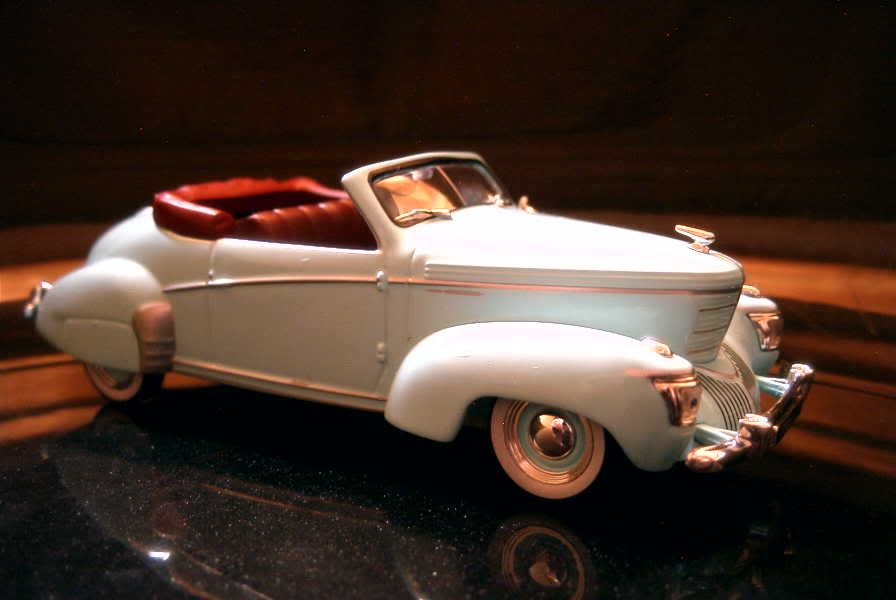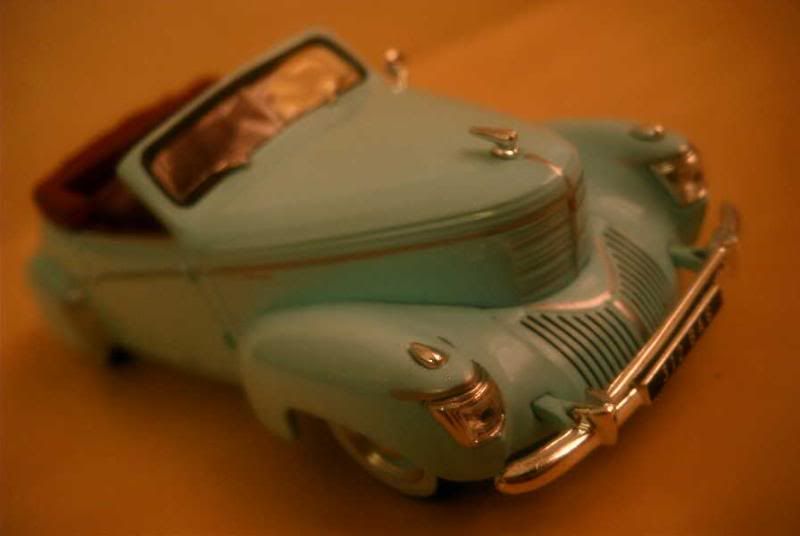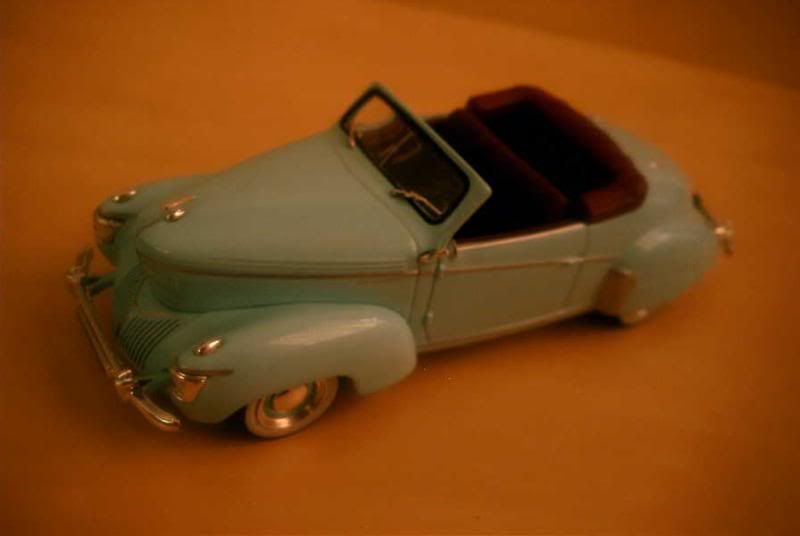A little history
In dire straits by the late Thirties, Graham attempted what had succeeded back in 1932 with its “Blue Streak” line: to create a car with a body so modern that it would inspire the whole automobile industry. The result was called “Spirit of Motion”, a vehicle that would look as if moving even when parked. A very aggressive front grille with horizontal vents matched the front wings with their enclosed headlights. Even the wheel arches reflected this research for a visual perception of motion.
Under the striking skin, the new Graham was much more conventional. Continental provided its six-cylinder, 3.6-litre engine. The standard block could rely on 90 bhp to power the base Model 96. With an optional supercharger the Graham would become a Model 97, advertised for 116 bhp.
The motoring press liked the Spirit of Motion line – not the American public. Slightly more than five thousands were built for the 1938 model year: the Spirit of Motion wasn’t the expected saviour. With pockets emptier than ever, Graham couldn’t change much of its car for 1939. Modifications were limited to the removal of the running boards. Nevertheless the company was able to create two more bodies, a two-door sedan and a coupe. This widened choice allowed the sales to climb… by only a few hundreds, sadly. Bearing up under adverse circonstances, a few more of these cars were built as 1940 models, before they were replaced by the Graham Hollywood, courtesy of a deal with Hupmobile that had just negociated businessman Norman De Vaux.
About the model
Model: Graham Model 97
Year: 1939
Maker: Ixo
Scale: 1/43
Distributed by: Altaya as no.13 of its Voitures Classiques press series
Acquired: brand new, in August 2006, in Souillac, France
Altaya proposed a Graham, once again built in Ixo’s Chinese factory. Its choice didn’t go to the mainstream sedan but to a rather unfamiliar convertible, built as a one-off in 1939 – Graham certainly didn’t have the resources needed to put such a low-volume vehicle in regular production. How nice this die-cast could have been if only Ixo would have succeeded in reproducing the front wings as well as it did the bonnet. Alas they cannot be more dissimilar to the shape of the original ones, betraying the very meaning of the Spirit of Motion look. No need to try comparing the two at length, just look for a photo of the real car and place it next to the pictures posted below – you’ll then understand why I didn’t give more than 8/20 to this die-cast. It should be added that this model is branded as a “Sharknose”, a nickname the 1938-40 Graham didn’t receive until several years after its production had ended and consequently that I avoided using here.




In dire straits by the late Thirties, Graham attempted what had succeeded back in 1932 with its “Blue Streak” line: to create a car with a body so modern that it would inspire the whole automobile industry. The result was called “Spirit of Motion”, a vehicle that would look as if moving even when parked. A very aggressive front grille with horizontal vents matched the front wings with their enclosed headlights. Even the wheel arches reflected this research for a visual perception of motion.
Under the striking skin, the new Graham was much more conventional. Continental provided its six-cylinder, 3.6-litre engine. The standard block could rely on 90 bhp to power the base Model 96. With an optional supercharger the Graham would become a Model 97, advertised for 116 bhp.
The motoring press liked the Spirit of Motion line – not the American public. Slightly more than five thousands were built for the 1938 model year: the Spirit of Motion wasn’t the expected saviour. With pockets emptier than ever, Graham couldn’t change much of its car for 1939. Modifications were limited to the removal of the running boards. Nevertheless the company was able to create two more bodies, a two-door sedan and a coupe. This widened choice allowed the sales to climb… by only a few hundreds, sadly. Bearing up under adverse circonstances, a few more of these cars were built as 1940 models, before they were replaced by the Graham Hollywood, courtesy of a deal with Hupmobile that had just negociated businessman Norman De Vaux.
About the model
Model: Graham Model 97
Year: 1939
Maker: Ixo
Scale: 1/43
Distributed by: Altaya as no.13 of its Voitures Classiques press series
Acquired: brand new, in August 2006, in Souillac, France
Altaya proposed a Graham, once again built in Ixo’s Chinese factory. Its choice didn’t go to the mainstream sedan but to a rather unfamiliar convertible, built as a one-off in 1939 – Graham certainly didn’t have the resources needed to put such a low-volume vehicle in regular production. How nice this die-cast could have been if only Ixo would have succeeded in reproducing the front wings as well as it did the bonnet. Alas they cannot be more dissimilar to the shape of the original ones, betraying the very meaning of the Spirit of Motion look. No need to try comparing the two at length, just look for a photo of the real car and place it next to the pictures posted below – you’ll then understand why I didn’t give more than 8/20 to this die-cast. It should be added that this model is branded as a “Sharknose”, a nickname the 1938-40 Graham didn’t receive until several years after its production had ended and consequently that I avoided using here.







No comments:
Post a Comment